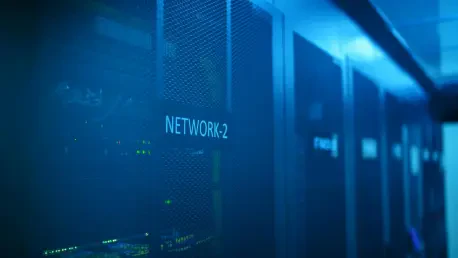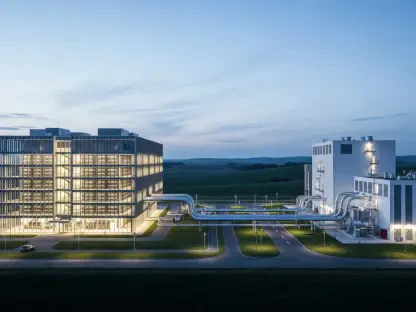As technology continues to advance at a breathtaking pace, Pennsylvania finds itself at the heart of a critical debate surrounding the rapid proliferation of data centers—massive facilities that power cloud computing, artificial intelligence, and digital infrastructure. These centers, backed by billions in investments from industry giants like Amazon and Google, promise economic growth and technological innovation for the Keystone State. Yet, their immense energy consumption is straining the electrical grid and sparking concerns about who will ultimately pay for the necessary infrastructure upgrades. State officials, utility regulators, and consumer advocates are now working tirelessly to address this challenge, striving to balance the benefits of this tech boom with the need to shield residential ratepayers from bearing unfair financial burdens. The stakes are high, as the decisions made today could shape both the state’s economic future and the reliability of its power supply for years to come.
Economic Opportunities and Challenges
Harnessing Growth for the Future
The influx of data centers into Pennsylvania represents a transformative opportunity for the state’s economy, with the potential to create jobs and establish the region as a leading tech hub. Major players like Amazon are driving this momentum with a staggering $20 billion commitment to construct facilities in Bucks and Luzerne counties, signaling confidence in the state’s infrastructure and workforce. Beyond corporate investments, political leaders have championed initiatives totaling $90 billion in AI, energy, and data center projects, further highlighting the scale of ambition. This surge promises to attract talent, boost local businesses, and position Pennsylvania as a cornerstone of the digital economy. However, this growth comes with a caveat—ensuring that the benefits are not overshadowed by the strain on resources, particularly the electrical grid, which must expand to meet unprecedented demand without compromising service to existing customers.
Weighing the Risks of Expansion
While the economic upside of data centers is undeniable, the risks tied to their energy demands cannot be ignored. These facilities consume vast amounts of electricity, often necessitating costly upgrades to transmission systems in areas ill-equipped for such loads. Utility providers like FirstEnergy Pennsylvania, which serves over 2 million customers, have underscored the financial and logistical hurdles of accommodating this growth. If projects falter or fail to deliver expected usage, the resulting “stranded costs” for unused infrastructure could unfairly fall on residential ratepayers, hiking utility bills for households and small businesses. Consumer advocates, including acting advocate Darryl Lawrence, have warned that such cost-shifting could dampen economic progress by squeezing family budgets and deterring business investment. The challenge lies in crafting policies that mitigate these risks while still encouraging the tech sector’s expansion.
Regulatory Solutions on the Horizon
Developing Equitable Frameworks
To navigate the complexities of data center growth, the Pennsylvania Public Utility Commission (PUC) is spearheading efforts to create a model tariff—a structured set of guidelines dictating rates, charges, and service terms for large energy consumers. The primary aim is to ensure that data center developers shoulder the bulk of infrastructure costs, particularly when upgrades offer no direct benefit to other ratepayers. Earlier this year, a comprehensive hearing convened by the PUC brought together diverse stakeholders, including utility companies, tech industry leaders, and consumer advocates, to provide input on this framework. Their testimonies emphasized the urgency of protecting households from financial fallout. State Rep. Rob Matzie, a prominent voice in utilities policy, has indicated that forthcoming legislation will draw heavily on the PUC’s findings to safeguard residents from rising costs and potential power disruptions like blackouts or brownouts.
Addressing Grid Stability Concerns
Beyond cost allocation, the strain on the electrical grid remains a central concern in regulating data centers. These facilities often require customized enhancements to transmission networks, placing significant pressure on utilities to maintain reliability across the board. Testimony from industry experts during the PUC hearing revealed that without careful planning, the risk of service interruptions could grow as demand spikes. There is a strong push, supported by companies like Duquesne Light Co., for large-load customers to fund their own infrastructure studies and upgrades, or even explore self-generated power solutions to lessen the burden on the grid. This approach aims to preserve stability for the millions of Pennsylvanians who rely on consistent electricity for daily life. As discussions continue, the focus remains on innovative strategies that align the needs of tech giants with the broader public interest, ensuring a resilient energy future.
Drawing Insights from Other States
Pennsylvania is not alone in confronting the regulatory challenges posed by data centers, as other states offer valuable lessons in managing this tech-driven growth. Ohio, for example, has implemented a policy requiring data centers to pay for at least 85% of their projected energy usage to cover infrastructure costs, even if actual consumption falls short. Georgia, meanwhile, is actively working to prevent cost-shifting to smaller ratepayers while expanding energy capacity. In Pennsylvania, a similar consensus is emerging, with stakeholders advocating for large-load customers to bear primary responsibility for their energy needs. This perspective, reinforced by utility leaders and consumer groups alike, reflects a broader national trend toward fairness in cost distribution. By learning from these examples, state regulators and lawmakers are better equipped to craft policies that protect residents while fostering a competitive environment for tech investment.
Building Collaborative Momentum
The path forward in Pennsylvania hinges on collaboration between the PUC, state legislators, and a wide array of interested parties. Nearly 60 groups, ranging from data center developers to electricity providers and advocacy organizations, submitted public comments following the PUC’s hearing, showcasing the depth of engagement on this issue. State Rep. Rob Matzie has emphasized the importance of leveraging the PUC’s expertise to inform upcoming legislation, which is expected to prioritize consumer protection and grid reliability. This cooperative approach seeks to address the dual goals of economic development and equitable cost management, ensuring that the benefits of data center growth are shared without placing undue strain on households. As these efforts unfold, the state’s response could serve as a blueprint for others grappling with the intersection of technology and energy policy, highlighting the value of inclusive dialogue in shaping sustainable solutions.









